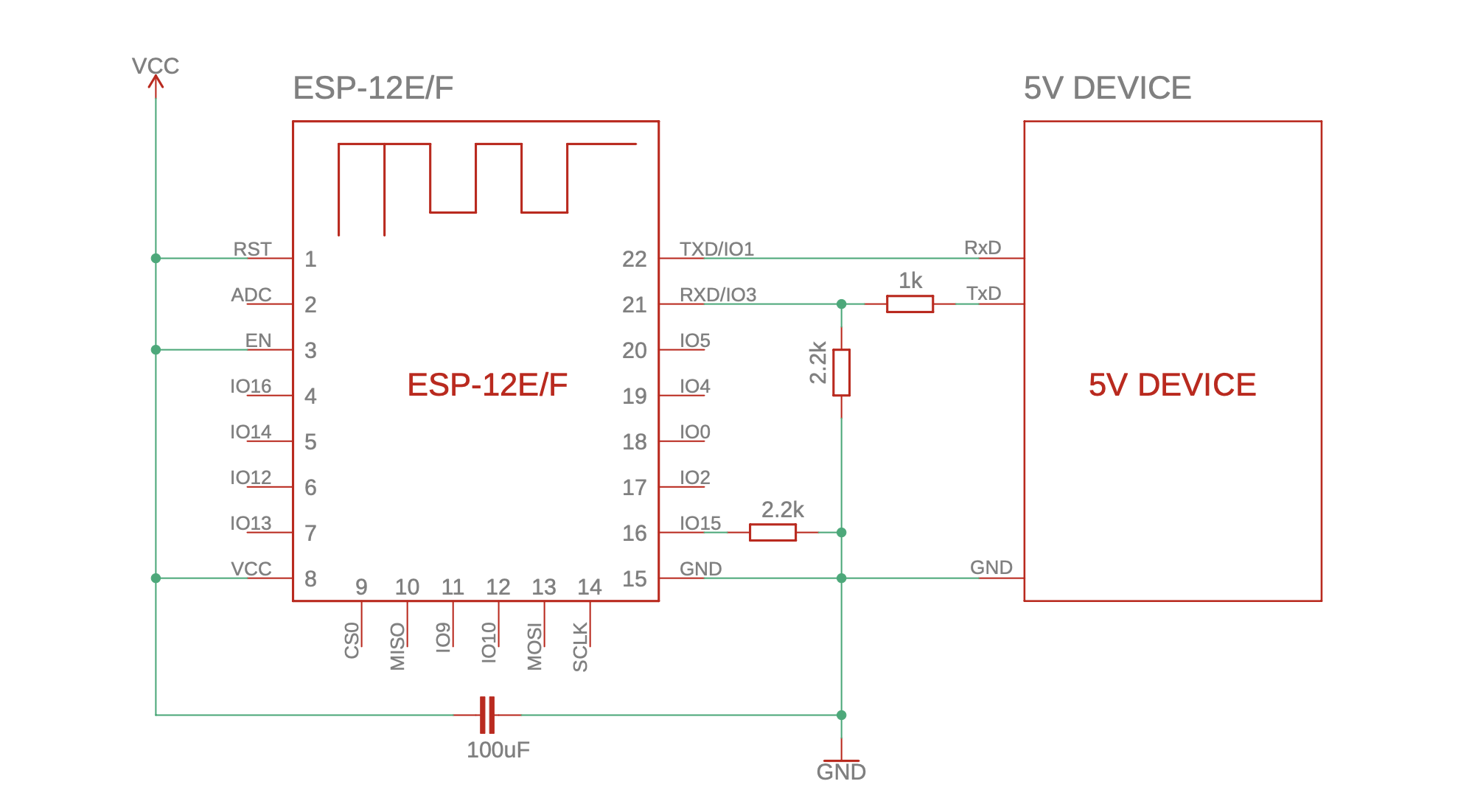


In recent years the ESP8266 has become one of my go-to choices for smart home/IoT devices or projects requiring WiFi. It is cheap (around $1.5 on Amazon)1, has WiFi, and can be programmed using the Arduino IDE, making it an easy replacement for Arduinos if we need WiFi connectivity.
This post shows how we can connect 5V devices to the 3.3V ESP8266 module for, e.g., serial communication or programming. It is part of a complete ESP8266 reference you can find here.
If we want to connect the ESP module to other 5V devices (e.g., for programming), we will use a voltage divider to reduce the 5V to 3.3V. Using the voltage devider formula $$V_{R1} = V_{in}\frac{R_1}{R_2}$$ we see that the common resistor values \(R_1=1k\Omega\) and \(R_2=2.2k\Omega\) reduce 5V down to 2.27V. We do not need to adjust the output of the 3.3V chip (e.g., the esp). The circuit diagram for this setup is depicted in Fig. 5.1 below.

There is some debate online whether the ESP8266 is 5V tolerable or not. Do we really need a voltage divider when programming or connecting the ESP to other 5V devices?
The datasheet clearly states a maximum allowed voltage of 3.6V. Therefore, it is best practice to use a 3.3V power supply (a linear regulator or a DCDC converter) and a voltage divider when connecting to 5V devices over serial. However, I have personally powered ESP modules using 5V in the past, and I have programmed them many times without using a voltage divider without issues.
So, is it recommended? No. Does it work? Probably? Most of the time? Does it shorten the ESP's lifespan? Probably also yes.
This post is part of a complete ESP8266 reference/guide. You can find more information on how to use your ESP8266 module effectively at blog.hirnschall.net/esp8266/.

The content published on this page (with exceptions) is published under the CC Attribution-NonCommercial 3.0 Unported License. You are free to share on commercial blogs/websites as long as you link to this page and do not sell material found on blog.hirnschall.net/* or products with said material.
1: As an Amazon Associate I earn from qualifying purchases.